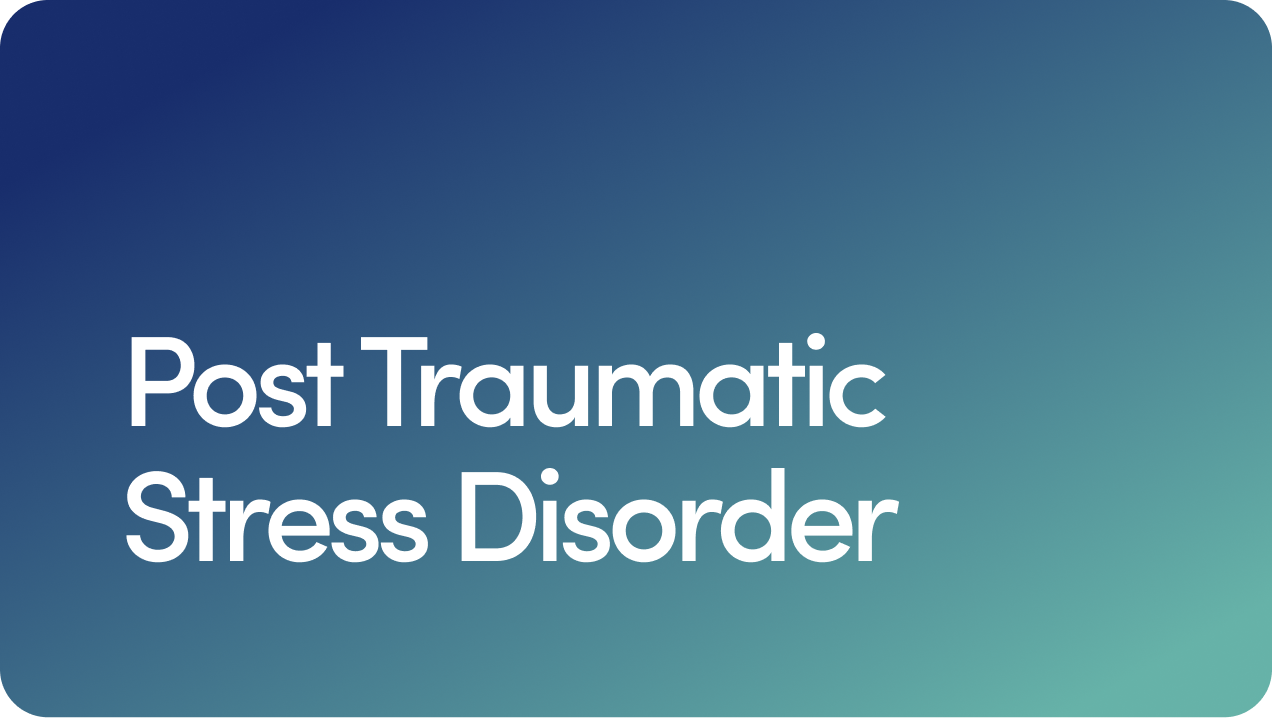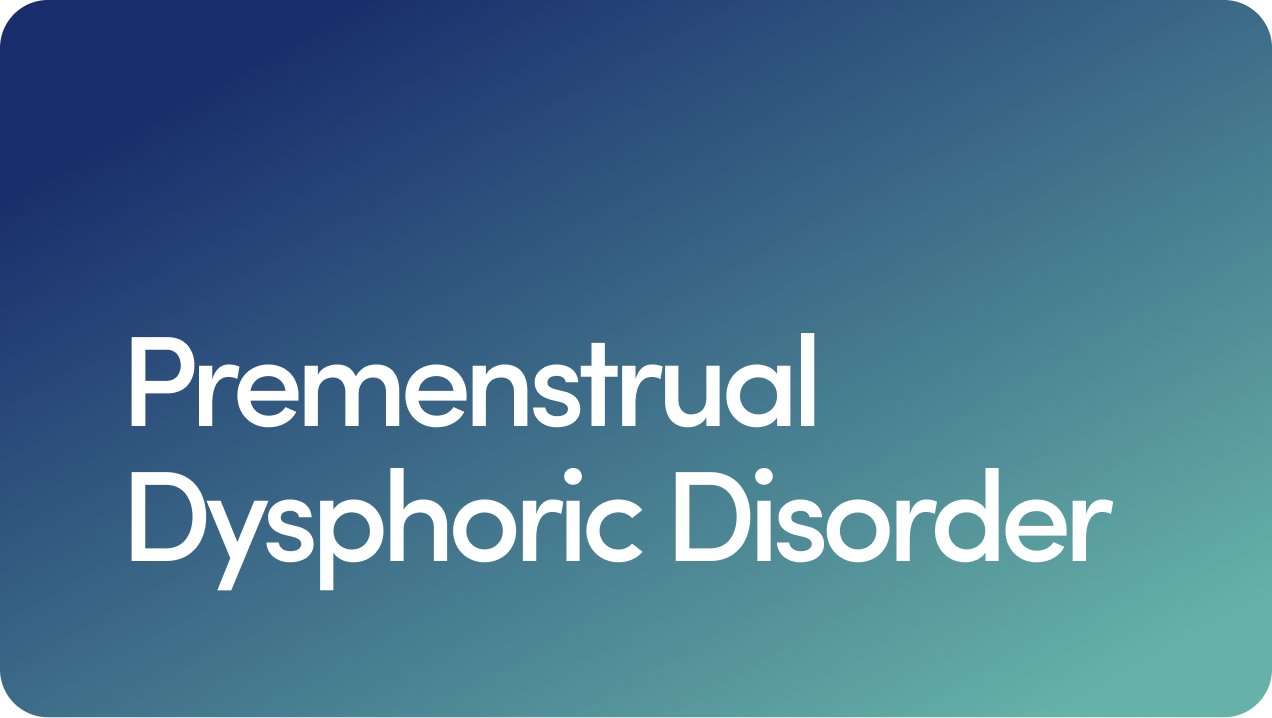Content
Whatever it is, Hers can help
What Is Trauma? A Deep Dive

What is trauma? Trauma can be a challenging concept to pin down, and there’s no one-size-fits-all definition. It encompasses a wide range of experiences and can affect people in physical, emotional, and behavioral ways.
In essence, trauma arises from events that shake your sense of safety — whether you’re fully aware of it or not and regardless of whether the threat was real or perceived.
Global data show that around 70 percent of people reported experiencing some form of trauma in their lives. In the U.S., about 90 percent of adults report exposure to at least one potentially traumatic event during their lifetime. This highlights just how common traumatic experiences are.
Content
What Does Trauma Mean?
Trauma is deeply personal. What might be traumatic and trigger an emotional response for one person may not be the same for another. And some types of trauma, like the loss of a loved one, are part of the human experience. But that doesn’t lessen the pain they bring.
Trauma can lead to serious mental health challenges, such as post-traumatic stress disorder (PTSD) or chronic anxiety. The encouraging news is that only a minority of patients who experience trauma will develop PTSD, and there are many effective treatment options.
Let’s take a closer look at these complexities and explore the path to healing. Ahead, we’ll explore some common types of traumas, causes, and potential effects.
Defining Trauma: What Is Trauma?
The term trauma can be traced back to an ancient Greek word meaning “hurt” or “wound.” That may help clarify why the definition of trauma is so variable, which is part of what makes trauma so personal.
Psychiatrist Judith Herman, MD, a pioneer in the study of psychological trauma, offers more valuable insight. She describes trauma as the result of experiences that disrupt a person’s ability to cope. In her book Trauma and Recovery, she notes that the natural instinct for self-preservation can get stuck in a state of alert, as if you’re always waiting for that danger to return.
Understanding this can be the first step in recognizing your own experiences and how trauma affects you.
What Is Considered Trauma?
What types of experiences can be traumatic? Again, it’s different for everyone. But the Diagnostic and Statistical Manual of Mental Disorders, 5th edition (DSM-5), defines a traumatic event as being exposed to:
Death or the threat of death
Serious injury or the threat of serious injury
Sexual violence or the threat of sexual violence
Some more specific trauma examples include:
War and widespread violence (or witnessing it)
Domestic violence
Harassment and discrimination
Childhood neglect
Accidents
Things that cause physical pain
Natural disasters
Life-threatening illness
While there are some common underlying causes of trauma and reasons for trauma responses — like natural disasters and sexual abuse, for example — it’s all subjective.
Anything that produces the following feelings can be a traumatic experience for some people:
Shock
Powerlessness, helplessness, or loss of control
Fear
Abandonment or chronic loneliness
Unsafe
Worthlessness
Shame or humiliation
But again, it’s a very personal experience.
Different Types of Trauma
It can be helpful to break down some common types of trauma and highlight risk factors that might increase someone’s chances of experiencing trauma, such as gender, age, and race.
Let’s look at a few different kinds:
Childhood trauma. Sometimes described as developmental trauma, this is trauma that occurs during childhood or adolescence, such as physical, emotional, or verbal abuse or a parent passing away. It can also depend on the developmental stage during which the trauma unfolds.
Group or collective trauma. This type of trauma is a shared experience among a large group of people. For instance, the COVID-19 pandemic brought about a collective trauma that affected many. Other examples include the impacts of war or terrorism.
Generational trauma. This is a form of trauma that gets “passed down” through generations of family members. The effects of a traumatic experience can echo through families, shaping responses and behaviors long after the initial event.
Racial trauma. Ongoing experiences of racism and their emotional responses can fall under this category. The cumulative impact of racism — including everything from hate crimes to overt discrimination and pervasive microaggressions — can be significant and profoundly damaging.
Sexual trauma. This category is when a person experiences trauma related to sexual abuse or sexual assault.
Secondary Trauma. Sometimes called vicarious trauma (as in “living vicariously” through someone else), this is when a person witnesses someone else experiencing trauma or is the caregiver of a trauma survivor, like a loved one. It’s as if they “inherit” some of that trauma response, even if they weren’t directly involved.
Traumatic experiences often trigger you to enter “fight-or-flight” mode. This is the body’s automatic reaction to stressful, dangerous, or alarming situations. It’s triggered by the nervous system and helps you prepare for immediate action — a survival mechanism.
More recently, researchers have been highlighting two other stress responses — freeze and fawn. So there’s actually fight, flight, freeze, or fawn. Let’s unpack each one here:
Fight. This is an aggressive response to a perceived threat. Your body gets ready to confront the perceived threat.
Flight. This is when you flee the perceived threat. Your body’s reaction is to escape it.
Freeze. This may happen when your body doesn’t know whether to fight or flee, so you become as still as possible until the threat is gone.
Fawn. This is when you feign sweetness toward the perceived threat to make it safe again.
These all unfold while you’re in survival mode, so you may not feel like you have control over your reaction. Instead, your nervous system takes over and your body releases stress hormones like cortisol and epinephrine (also known as adrenaline).
This increases your heart rate and blood pressure while mobilizing glucose (blood sugar) stores to give you a surge of energy — in case you need to fight or make a run for it. It makes you more alert and sharpens your senses.
“Trauma is one of the more difficult problems that patients may experience. It has a profound effect on their lives,” says psychiatrist Daniel Z. Lieberman, MD.
It’s important to note that not everyone who experiences trauma will go on to develop post-traumatic stress disorder (PTSD). Some individuals may feel traumatized without needing treatment for a mental illness.
However, for those who do develop symptoms, diagnosable trauma often falls into one of two categories. There’s acute stress disorder, which happens in the short term after the traumatic event, and then there’s chronic stress, often diagnosed as PTSD if certain symptoms persist over time.
Acute Stress Disorder (ASD)
Acute stress disorder happens when you experience a “fight-or-flight” response to a real or perceived danger. It shares symptoms with PTSD, but the key difference is the timing. ASD typically develops right after a traumatic event, often within the first three days, and lasts up to four weeks.
If those symptoms stick around longer or if the threat continues, it may lead to a diagnosis of PTSD.
See our blog on acute stress disorder versus PTSD to explore more of the differences between these diagnoses.
Post-Traumatic Stress Disorder
PTSD usually emerges within the first three months of a trauma, though it can sometimes show up years later.
Generally, PTSD trauma symptoms fall into a few main categories:
Re-experiencing symptoms. These usually manifest as flashbacks of the trauma that make you feel like it’s happening all over again, vivid nightmares related to the trauma, and intrusive memories of the event. This could happen at any time or on the anniversaries of traumatic events.
Avoidance symptoms. These involve steering clear of anything that reminds you of the trauma. It might mean avoiding specific places, thoughts, or feelings and can even lead to social isolation. It can disrupt daily life and interfere with routines and responsibilities.
Cognition and mood symptoms. Dissociation and emotional numbness are common feelings that emerge with PTSD. Other mood and cognition symptoms include difficulty concentrating, negative thoughts and feelings about oneself and the trauma, and losing the ability to feel positive emotions.
Increased reactivity. This category encompasses behavioral, reactive, and physical symptoms. For example, a person might experience emotional outbursts, sleep issues, and hypervigilance (startling easily or always being on the lookout for danger).
Complex Post-Traumatic Stress Disorder (C-PTSD)
Complex trauma is a form of PTSD that can develop in people who experience ongoing or multiple traumas, such as childhood abuse, domestic violence, sexual abuse, or war.
In addition to typical PTSD symptoms, C-PTSD often includes difficulty with emotional regulation and challenges with forming stable relationships.
While it isn’t currently classified as a separate diagnosis in the DSM, research suggests complex post-traumatic stress disorder is a distinct condition that deserves attention and tailored treatments.
If you think you might be experiencing C-PTSD, know that support is available. Get in touch with a healthcare professional to see what your options are.
Other Effects of Trauma
Even if you don’t have PTSD, you may still experience trauma symptoms like panic attacks, dissociation, impulsivity, and physical issues such as headaches. These can significantly impact daily life and relationships.
Trauma can also lead to an increased risk of:
Self-medication and substance use disorders
Self-harm
Mental health issues like depression and anxiety
Physical health problems such as obesity and sleep disturbances
If you’ve experienced trauma and it’s disrupting your life, contact a healthcare provider for support.
Why Do Traumatic Experiences Affect Some People More Than Others?
Certain things may increase the likelihood of developing PTSD, like genetics, not having a strong social or family support system, and personality.
Learn more about this condition and related mental health disorders in our guides to bipolar and PTSD and anxiety versus PTSD.
Treatment Options for Trauma
The main PTSD treatments typically include psychotherapy, medication, and some alternative approaches.
Dr. Lieberman notes that trauma can be difficult to treat, but support is available. “Many people with psychiatric illnesses find that the combination of psychotherapy and medications work [better] than either alone, but for those who have experienced trauma, adding in therapy is a requirement,” he says.
What Is Trauma-Informed Care?
Trauma-informed care (TIC) is an approach to trauma treatment that acknowledges the deep effect of the trauma on the patient’s life, emotional well-being, and physical health. It aims to provide a supportive, safe space and resources for those who’ve experienced trauma.
Trauma-informed care and psychotherapies for trauma include options like:
Cognitive behavioral therapy (CBT). CBT helps patients identify and change negative thinking patterns that can lead to unhealthy behaviors. This therapy method gradually guides those with PTSD to process traumatic events and heal.
Exposure therapy. In exposure therapy, people confront their fears related to their trauma, starting slowly and building up over time. Research has shown that exposure therapy can be as effective as cognitive processing therapy for treating PTSD.
Stress inoculation training. This is a specialized form of talk therapy designed specifically for PTSD. Its primary goal is to help folks develop effective coping skills to manage symptoms and handle future stressors with greater confidence.
Eye movement desensitization and reprocessing (EMDR). EMDR aims to alleviate trauma symptoms by changing how traumatic memories are stored in the brain. It involves stimulation, like taps or eye movements, while focusing on the traumatic memory to reduce its emotional impact.
Present-centered therapy (PCT). This is a non-trauma-focused approach that addresses current issues rather than delving into past trauma. It helps people with PTSD understand how their symptoms affect daily life and teaches them effective strategies to manage current stressors and challenges.
Narrative exposure therapy (NET). NET encourages PTSD patients to put together their life stories in a way that helps them make sense of their traumatic experiences while also highlighting positive moments. According to the American Psychological Association, it’s particularly effective for those who’ve experienced multiple traumas and is often used in support group settings.
“The challenge is that trauma therapy is hard,” says Dr. Lieberman. “It’s time-consuming, and it requires a patient to face their trauma, which is frightening.” He adds that it can help to focus on the benefits and positive life changes that can be achieved with effective trauma therapy.
Some prescription medications show promise in treating PTSD, too. These include:
Selective serotonin reuptake inhibitors (SSRIs). SSRIs are antidepressants that act on serotonin activity in the brain. Sertraline (Zoloft®) and paroxetine (Paxil®) are FDA-approved specifically to treat PTSD. Others, like fluoxetine (Prozac®) and citalopram (Celexa®), are sometimes prescribed off-label for PTSD.
Selective serotonin-norepinephrine reuptake inhibitors (SNRIs). Providers might prescribe SNRIs like venlafaxine (Effexor®) and duloxetine (Cymbalta®) to treat PTSD off-label. They also act on serotonin but target norepinephrine (a stress chemical) as well.
Alpha-blockers. Alpha-blockers were first designed to manage high blood pressure (hypertension). They work by blocking norepinephrine to help with blood flow. Sometimes, healthcare professionals prescribe them off-label to help with the recurring nightmares.
Off-label use means a drug is prescribed by a healthcare provider for something it’s not FDA-approved to treat.
Explore the different types of antidepressants for PTSD and other mental health conditions in our blog.
Beyond psychotherapy and more traditional medications, experimental and alternative approaches are emerging to potentially treat PTSD. These include:
Ketamine therapy. Some studies on ketamine for PTSD are promising, though it isn’t FDA-approved yet. Researchers believe ketamine works by blocking certain brain receptors involved in memory formation. One review suggests low doses might provide relief for people with long-term PTSD.
Emotional freedom technique (EFT). EFT uses physical pressure (aka acupressure) on specific sensitive points of the skin to relieve pain and muscle tension. A mental health professional teaches you how to tap rhythms on your hands, head, face, and collarbones while you actively reframe your memories of traumatic events.
Other Ways to Cope With Trauma
PTSD resulting from trauma is a serious mental health condition that calls for professional treatment. But there are other ways to cope with the harmful effects of trauma while you wait for or go through treatment.
Here are some strategies that support emotional and behavioral wellness:
Find safe spaces. Seek out environments and people who make you feel secure and supported.
Practice relaxation techniques. Try mindfulness or deep breathing exercises to help ground you in the present moment and quiet your mind.
Keep a journal. Writing about your thoughts and feelings can be a helpful way to process what you’re going through.
Prioritize self-care. Think about what self-care means to you. Focus on your basic needs, like getting enough sleep, eating balanced meals, staying hydrated, and being active.
Tap into your creativity. Engaging in creative activities or art therapy can be a wonderful outlet for your emotions.
If you haven’t already, consider reaching out for medical care and a more formal treatment plan.
What Is Trauma? Key Takeaways
Understanding trauma can be complex, but knowing the basics can help you get the support and treatment you need.
Here are some key takeaways:
Trauma encompasses a wide range of experiences that threaten your sense of safety, impacting you physically, emotionally, and behaviorally.
Common types include childhood trauma, collective trauma (like pandemics), generational trauma, sexual trauma, racial trauma, and secondary trauma (vicarious experiences).
The impacts of trauma can be profound and vary significantly from person to person. Not everyone develops PTSD, but trauma can lead to various mental health problems, including acute stress disorder and PTSD.
Symptoms of PTSD resulting from trauma can manifest as re-experiencing, avoidance, mood changes, and increased reactivity.
Remember, you’re not alone in this, and there are many paths to healing and well-being. Effective treatments include various therapies and medications.
If you’re feeling overwhelmed, reaching out for professional support can be a crucial step.
You can talk to a healthcare provider for recommendations or have a virtual consultation through our online psychiatry resources to find out if medication might be suitable for you.
For support from trained crisis counselors experienced in trauma-related distress, contact the U.S. Department of Veterans Affairs (VA) at 877-927-8387, the National Sexual Assault Hotline at 800-656-4673, the National Center for PTSD, or the Substance Abuse and Mental Health Services Administration (SAMHSA), depending on your situation.
If you or a family member are experiencing suicidal thoughts, call or text 988 to reach the Suicide and Crisis Lifeline.
37 Sources
- Almli LY, et al. (2014). Genetic approaches to understanding post-traumatic stress disorder. https://academic.oup.com/ijnp/article/17/2/355/757279
- American Psychological Association. (n.d.). Collective trauma. https://www.apa.org/about/governance/president/grief-toolkit/collective-trauma.pdf
- American Psychological Association. (2017). Eye movement desensitization and reprocessing (EMDR) therapy. https://www.apa.org/ptsd-guideline/treatments/eye-movement-reprocessing
- American Psychological Association. (2023). Intergenerational trauma. https://dictionary.apa.org/intergenerational-trauma
- American Psychological Association. (2017). Medications for PTSD. https://www.apa.org/ptsd-guideline/treatments/medications
- American Psychological Association. (2017). Narrative exposure therapy (NET). https://www.apa.org/ptsd-guideline/treatments/narrative-exposure-therapy
- Anxiety and Depression Association of America. (2021). PTSD treatment & facts. https://adaa.org/understanding-anxiety/posttraumatic-stress-disorder-ptsd/treatment-facts
- Basquez RY, et al. (2023). Prazosin. https://www.ncbi.nlm.nih.gov/books/NBK555959/
- Belsher BR, et al. (2017). Present‐centered therapy (PCT) for post‐traumatic stress disorder (PTSD) in adults. https://www.ncbi.nlm.nih.gov/pmc/articles/PMC6486094/
- Brewin C, et al. (2000). Meta-analysis of risk factors for posttraumatic stress disorder in trauma-exposed adults. https://pubmed.ncbi.nlm.nih.gov/11068961/
- Chu BR, et al. (2024). Physiology, stress reaction. https://www.ncbi.nlm.nih.gov/books/NBK541120/
- Church DA, et al. (2018). Guidelines for the treatment of PTSD using clinical EFT (emotional freedom techniques). https://www.ncbi.nlm.nih.gov/pmc/articles/PMC6316206/
- Cruz DA, et al. (2022). Developmental trauma: conceptual framework, associated risks and comorbidities, and evaluation and treatment. https://www.ncbi.nlm.nih.gov/pmc/articles/PMC9352895/
- Du RU, et al. (2022). The multivariate effect of ketamine on PTSD: systematic review and meta-analysis. https://www.ncbi.nlm.nih.gov/pmc/articles/PMC8959757/
- Duek OR, et al. (2023). Long term structural and functional neural changes following a single infusion of Ketamine in PTSD. https://www.nature.com/articles/s41386-023-01606-3
- Fanai ME, et al. (2023). Acute stress disorder. https://www.ncbi.nlm.nih.gov/books/NBK560815/
- Feriante JO, et al. (2023). Acute and chronic mental health trauma. https://www.ncbi.nlm.nih.gov/books/NBK594231/
- Heijman JA, et al. (2024). Effectiveness of trauma-focused art therapy (TFAT) for psychological trauma: study protocol of a multiple-baseline single-case experimental design. https://www.ncbi.nlm.nih.gov/pmc/articles/PMC10826536/
- Herman JU. (1997). Trauma and recovery: The aftermath of violence — from domestic abuse to political terror. https://www.amazon.com/Trauma-Recovery-Aftermath-Violence-Political/dp/0465087302
- Hyland PH, et al. (2018). Posttraumatic stress disorder and complex posttraumatic stress disorder in DSM-5 and ICD-11: clinical and behavioral correlates. https://pubmed.ncbi.nlm.nih.gov/29577450/
- Jewett BE, et al. (2022). Physiology, NMDA receptor. https://www.ncbi.nlm.nih.gov/books/NBK519495/
- Kubzansky LA, et al. (2014). The weight of traumatic stress: a prospective study of posttraumatic stress disorder symptoms and weight status in women. https://www.ncbi.nlm.nih.gov/pmc/articles/PMC4091890/
- National Health Services (NHS). (2022). Complex PTSD - post-traumatic stress disorder. https://www.nhs.uk/mental-health/conditions/post-traumatic-stress-disorder-ptsd/complex/
- National Institute of Mental Health (NIMH). (2024). Post-traumatic stress disorder. https://www.nimh.nih.gov/health/topics/post-traumatic-stress-disorder-ptsd
- National Library of Medicine. (2023). Post-traumatic stress disorder. https://medlineplus.gov/posttraumaticstressdisorder.html
- Pai AN, et al (2017). Posttraumatic stress disorder in the DSM-5: controversy, change, and conceptual considerations. https://www.ncbi.nlm.nih.gov/pmc/articles/PMC5371751/
- Sareen JI. (2014). Posttraumatic stress disorder in adults: Impact, comorbidity, risk factors, and treatment. https://www.ncbi.nlm.nih.gov/pmc/articles/PMC4168808/
- Schmidt NO, et al. (2009). Exploring human freeze Responses to a threat stressor. https://www.ncbi.nlm.nih.gov/pmc/articles/PMC2489204/
- Scholte SA, et al. (2023). History of the term ’appeasement.’ https://www.ncbi.nlm.nih.gov/pmc/articles/PMC10078115/
- Sloan DE, et al. (2018). A brief exposure-based treatment vs cognitive processing therapy for posttraumatic stress disorder: a randomized noninferiority clinical trial. https://jamanetwork.com/journals/jamapsychiatry/fullarticle/2669771
- Smyth JO, et al. (2018). Online positive affect journaling in the improvement of mental distress and well-being in general medical patients with elevated anxiety symptoms: a preliminary randomized controlled trial. https://www.ncbi.nlm.nih.gov/pmc/articles/PMC6305886/
- Stahl ST, et al. (2005). SNRIs: their pharmacology, clinical efficacy, and tolerability in comparison with other classes of antidepressants. https://pubmed.ncbi.nlm.nih.gov/16142213/
- Substance Abuse and Mental Health Services Administration (SAMHSA). (2014). Trauma-informed care in behavioral health services. https://www.ncbi.nlm.nih.gov/books/NBK207191/
- U.S. Department of Veterans Affairs (VA). (n.d.). PTSD: National Center for PTSD. https://www.ptsd.va.gov/understand/what/ptsd_basics.asp
- U.S. Department of Veterans Affairs (VA). (n.d.). Racial trauma. https://www.ptsd.va.gov/understand/types/racial_trauma.asp
- U.S. Department of Veterans Affairs (VA). (n.d.). Stress inoculation training (SIT) for PTSD. https://www.ptsd.va.gov/understand_tx/stress_inoculation_training.asp
- Wiseman CH, et al. (2021). Examining the relationship between early childhood temperament, trauma, and post-traumatic stress disorder. https://www.ncbi.nlm.nih.gov/pmc/articles/PMC8670596/
Editorial Standards
Hims & Hers has strict sourcing guidelines to ensure our content is accurate and current. We rely on peer-reviewed studies, academic research institutions, and medical associations. We strive to use primary sources and refrain from using tertiary references. See a mistake? Let us know at [email protected]!
This article is for informational purposes only and does not constitute medical advice. The information contained herein is not a substitute for and should never be relied upon for professional medical advice. Always talk to your doctor about the risks and benefits of any treatment. Learn more about our editorial standards here.
Daniel Z. Lieberman, MD
Education
Doctor of Medicine - New York University Grossman School of Medicine, 1992
Bachelor of Arts - St. John’s College, 1985
Training
Internship & Residency - New York University Grossman School of Medicine, 1996
Medical Licenses
District of Columbia, 1996
Maryland, 2022
Virginia, 2022
Board Certifications
American Board of Psychiatry and Neurology, Psychiatry, 1997
American Board of Psychiatry and Neurology, Addiction Psychiatry, 1998
Other Certificates & Certifications
Stanford Online, AI in Healthcare Specialization Certificate, 2025
Stanford Online, Machine Learning Specialization Certificate, 2024
Affiliations & Memberships
Specialties & Areas of Focus
Mental Health
Years of Experience
33
Previous Work Experience
Professor and Vice Chair - Department of Psychiatry and Behavioral Sciences, George Washington University, 1996–2022
Publications & Research
Title: A neurotransmitter approach to the trolley problem
Published in: OBM Neurobiology
Date: 2019
URL: https://www.lidsen.com/journals/neurobiology/neurobiology-03-02-030
Title: An automated internet application to help patients with bipolar disorder track social rhythm stabilization
Published in: Psychiatric Services
Date: 2011
URL: https://psychiatryonline.org/doi/10.1176/ps.62.11.pss6211_1267
Title: Enhancing adherence to mood charting with an online version of the NIMH Life Chart
Published in: Annals of General Psychiatry
Date: 2010
URL: https://annals-general-psychiatry.biomedcentral.com/articles/10.1186/1744-859X-9-S1-S11
Title: The role of gender in single versus married patients with bipolar disorder
Published in: Comprehensive Psychiatry
Date: 2010
URL: https://www.sciencedirect.com/science/article/abs/pii/S0010440X0900128X
Title: Evaluation of the stability and validity of participant samples recruited over the Internet
Published in: CyberPsychology and Behavior
Date: 2008
Title: Pathways to change: The effect of a Web application on treatment interest
Published in: The American Journal on Addictions
Date: 2008
URL: https://onlinelibrary.wiley.com/doi/10.1080/10550490802138525
Media Mentions & Features
Washington Post, Why do passengers freak out on airplanes? Science might have the answer.
Associated Press, MillerCoors Tapping Into Millenials
The Washington Post, Holiday drinking can be hard on your health, but you can take precautions
Le Figaro (France), Daniel Z. Lieberman: «La dopamine nous pousse à acheter en nous promettant le bonheur» (Daniel Z. Lieberman: “Dopamine drives us to buy by promising us happiness”)
Men’s Health (Spain), Cómo la dopamina influye en nuestro cerebro y determina nuestra vida (How dopamine influences our brain and determines our lives).
CNBC, The psychological reason it’s so hard to work today after the riot — and how to cope
Business Insider, The reason why we self-sabotage is because our brains are wired to resist the things we want most in life
U.S. News & World Report, How Your Secrets Can Damage and Maybe Even Kill You
Why I Practice Medicine
I practice medicine because I believe that mental health is the foundation of a meaningful life. When people suffer psychologically, it touches every part of their existence—from relationships to work to the simple ability to feel joy. Because it can be so difficult for people who are suffering to find good mental health care, my mission has been to expand access through technology, so that no one is left behind.
Hobbies & Interests
I like to write in my spare time. I’ve written two nonfiction titles, Spellbound: Modern Science, Ancient Magic, and the Hidden Potential of the Unconscious Mind and the international bestseller, The Molecule of More: How a Single Chemical in Your Brain Drives Love, Sex, and Creativity--and Will Determine the Fate of the Human Race
Professional Website or Profile
danielzlieberman.com
Related Articles
Related Conditions
 Anxiety
Anxiety
 Depression
Depression
 OCD
OCD
 PTSD
PTSD
 Bipolar Disorder
Bipolar Disorder
 Premenstrual Dysphoric Disorder
Premenstrual Dysphoric Disorder